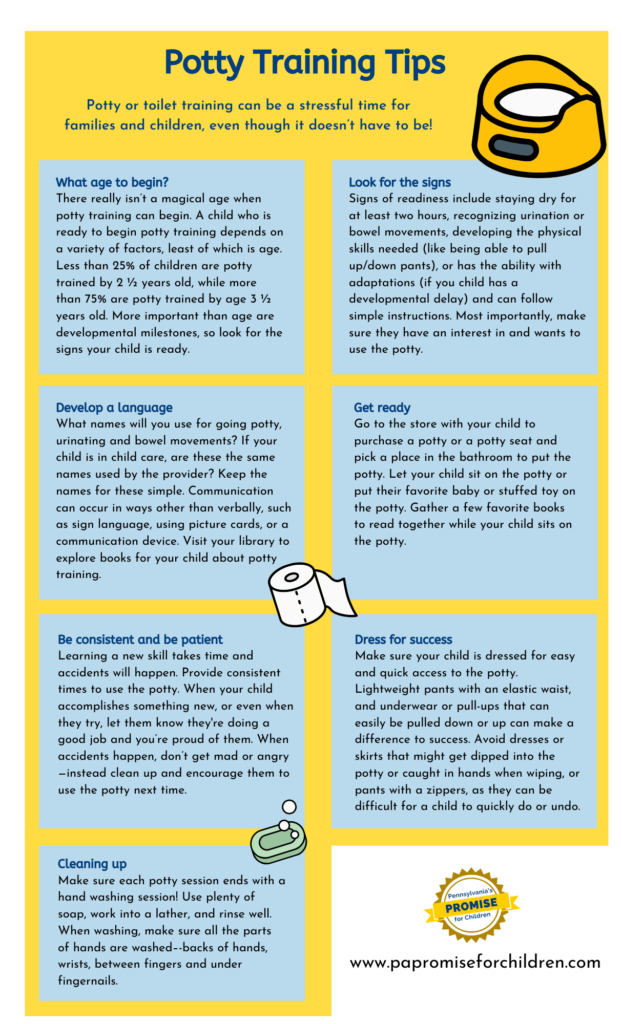Click to print in English and Spanish! (Prints on legal size 8.5 x14 inch paper.)

Potty or toilet training can be a stressful time for families and children, even though it doesn’t have to be!
What age to begin?
There really isn’t a magical age when potty training can begin. A child who is ready to begin potty training depends on a variety of factors, least of which is age. Less than 25% of children are potty trained by 2 ½ years old, while more than 75% are potty trained by age 3 ½ years old. More important than age are developmental milestones, so look for the signs your child is ready.
Look for the signs
Signs of readiness include staying dry for at least two hours, recognizing urination or bowel movements, developing the physical skills needed (like being able to pull up/down pants), or has the ability with adaptations (if you child has a developmental delay) and can follow simple instructions. Most importantly, make sure they have an interest in and wants to use the potty.
Develop a language
What names will you use for going potty, urinating and bowel movements? If your child is in child care, are these the same names used by the provider? Keep the names for these simple. Communication can occur in ways other than verbally, such as sign language, using picture cards, or a communication device. Visit your library to explore books for your child about potty training.
Get ready
Go to the store with your child to purchase a potty or a potty seat and pick a place in the bathroom to put the potty. Let your child sit on the potty or put their favorite baby or stuffed toy on the potty. Gather a few favorite books to read together while your child sits on the potty.
Be consistent and be patient
Learning a new skill takes time and accidents will happen. Provide consistent times to use the potty. When your child accomplishes something new, or even when they try, let them know they’re doing a good job and you’re proud of them. When accidents happen, don’t get mad or angry—instead clean up and encourage them to use the potty next time.
Dress for success
Make sure your child is dressed for easy and quick access to the potty. Lightweight pants with an elastic waist, and underwear or pull-ups that can easily be pulled down or up can make a difference to success. Avoid dresses or skirts that might get dipped into the potty or caught in hands when wiping, or pants with a zippers, as they can be difficult for a child to quickly do or undo.
Cleaning up
Make sure each potty session ends with a hand washing session! Use plenty of soap, work into a lather, and rinse well. When washing, make sure all the parts of hands are washed–-backs of hands, wrists, between fingers and under fingernails.
